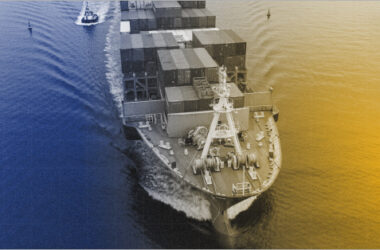Every mile of a voyage of a ship through the uncertain seas is full of opportunities and perils. Marine Insurance serves as a cushion against these risks, providing financial security to shipowners, cargo owners and even the charterers. However, Marine Insurance is not simply a matter of paying a premium and getting paid back, but it does have an entire system of rules in place to control duties, limits and terms. The Touch and Stay Clause is one of such crucial terms in a Marine Insurance Policy – a condition that binds the insured voyage to a certain route and a certain sequence of ports.
This provision is important to understand since the slightest change in the intended trip can bring about drastic effects on the insurance cover. Through this step-by-step guide, we will break down the meaning of the Touch and Stay Clause, the way it works and the reason why it is such a critical component in a Marine Insurance Policy.
What is the Touch and Stay Clause in Marine Insurance?
The Touch and Stay Clause is a generic clause that is found in numerous voyage policies under Marine Insurance. It states that the insured vessel has to touch (arrive at) and stay (call at) all the ports listed in the policy, in the exact order stated.
To put it in simple terms, when a Marine Insurance Policy states that a ship is going to sail from Mumbai to Singapore through Colombo and Jakarta, the ship has to go in that order; Mumbai – Colombo – Jakarta – Singapore. Any failure to adhere to this pre-specified order of routes, any omission of a port, or any unintended stop anywhere could be deemed a violation of this clause. This may even lead to a loss of insurance coverage, if the reason for violation is not agreed upon.
This provision basically provides a guarantee that the course taken by the vessel is similar to the one stated and accepted when the insurance policy was signed. It is a significant part of how the insurance provider can evaluate, determine and accept the risk associated with a certain voyage.
Objective & Significance of the Touch and Stay Clause
The Touch and Stay Clause has various objectives that reinforce the standards of fairness, transparency and predictability in Marine Insurance.
- Ensures Accuracy in Risk Assessment:Insurers evaluate risks in accordance to the proclaimed voyage path, climatic conditions and sea perils of the enumerated ports. When the ship alters its route, it subjects itself to unknown risks. This may potentially invalidate the policy.
- Ensures Voyage Integrity: The provision ensures that the insured voyage is made in accordance with the declaration. This also avoids the possibility of the insured party changing routes once he or she has been covered, which otherwise would create moral hazard or fraud.
- Maintains Legal and Contractual Certainty: It assists in ensuring that there is contractual clarity between insurers and policyholders. With strictly defined routes, there is a clear knowledge of coverage limits on both sides.
- Shields Against Unplanned Exposure to Risks: Alterations of routes may put a vessel in areas under threat of piracy, sanctions, or poor weather. The Touch and Stay Clause promises that such unexpected exposures do not come under the liability of the insurer.
Simply put, this provision ensures the integrity of the covered voyage and assists insurers to exercise control over risks they have agreed to cover.
How the Touch and Stay Clause Functions
The Touch and Stay Clause operates on a simple yet strict principle — the ship must call at each port listed in the policy in the exact sequence stated.
Let’s break down its operation:
- “Touch” means the vessel must physically arrive or make a call at the port named in the policy.
- “Stay” implies the ship must remain at the port long enough to fulfill the purpose of the call — such as loading, unloading, or refueling.
If a ship omits a port, visits an unlisted port, or alters the sequence (for instance, visiting Singapore before Colombo), the voyage is considered to have deviated from the insured route.
Such deviation can discharge the insurer from liability from the moment the deviation occurs, even if the ship later returns to the correct course.
However, insurers may accept certain minor deviations if they are due to unavoidable circumstances or are corrected immediately. But generally, once the clause is breached, coverage lapses automatically.
Legal Foundation of Touch and Stay Clause in Marine Insurance
In India, the Marine Insurance Act of 1963 regulates all the aspects of Marine Insurance such as voyage and their conditions. The Touch and Stay Clause is legally accepted within the greater provisions pertaining to voyage deviation as presented in Section 46 to 49 of the Act.
As per these provisions:
- The insured voyage should commence, continue and terminate as mentioned in the policy.
- Any unreasonable departure of the described route or ports shall relieve the insurer of liability, from the moment such deviation occurred.
This principle can be likened to the English marine insurance law especially under the Marine Insurance Act, 1906 (UK), which forms the basis for India’s Act.
Thus, the Touch and Stay Clause does not look like a mere formality under Indian law – it bears legal ramifications. It renders strict adherence to the declared voyage and preserves the sanctity of the offered contract between the insurer and the insured.
Effect of Any Breach of the Touch and Stay Clause
A violation of Touch and Stay Clause has immediate and drastic effects on the coverage of the insurance. The liability of the insurer ends automatically as soon as the ship does not follow the declared order of ports without a legal reason.
Consequences of Breach Include:
- Loss of Coverage: The policy becomes void for the remainder of the voyage from the time of deviation.
- No Claim Payable: Any loss or damage occurring after the deviation is not recoverable under the policy.
- No Reinstatement: Returning to the original route after deviation does not revive the coverage.
- Insurer’s Discharge from Liability: The insurer is legally freed from all obligations under the policy for any subsequent loss.
For instance, if a vessel insured to sail from Chennai → Dubai → Rotterdam → London alters its route to go Chennai → Rotterdam → Dubai → London, the moment it skips the agreed order, the policy ceases to provide protection from that point onward.
However, it’s important to note that if the deviation is excused under law, coverage may still continue.
Exceptions to the Touch and Stay Clause
Marine law recognizes that sometimes deviation is unavoidable. Hence, there are legitimate exceptions under which deviation or non-compliance with the Touch and Stay Clause does not void the policy.
Common Exceptions Include:
- To Avoid Danger: If the master of the ship alters course to avoid storms, icebergs, or areas of piracy, such deviation is considered justified.
- Saving Human Life: Deviation to rescue people in distress or assist another vessel in peril is always excused, reflecting maritime traditions of mutual aid.
- For Safety or Repairs: If the vessel deviates to make urgent repairs necessary for the safety of the ship or cargo, the deviation is lawful.
- Compliance with Regulations: When a deviation is ordered by the Government or by a naval order, or by the rules of a port, it is not termed as a violation.
- Accidents or Unavoidable Circumstances: A breakdown of mechanical equipment, error of navigation, or unexpected events compelling the diversion of the insured route may be pardoned provided that the ship promptly returns to the insured route when able to do so.
In each of these scenarios, the onus of proof is on the insured to demonstrate that the deviation was reasonable and done in good faith.
Example: Touch and Stay Clause at Work
Here is an illustration of the working of the Touch and Stay Clause in the real-world of Marine Insurance.
MV blue horizon is a ship covered by a voyage policy that is scheduled to ship between Kolkata and Hamburg via Suez Canal and Port Said. As a result of the congestion at Port Said, the master opts to avoid the port and instead go directly to Hamburg to save time.
However, unfortunately, on its way, the ship is damaged in the Mediterranean. The owners claim through their Marine Insurance Policy.
But as the ship did not touch and stay at Port Said as declared, it is considered to have deviated from the insured route. The insurer has a right to reject the claim because the violation of the clause occurred before the loss.
But had the master skipped Port Said, perhaps owing to a warning of piracy, or some other urgent circumstance, and could have furnished such evidence, the deviation would perhaps have been excused-and the claim could have been honored.
This example demonstrates how even a minor deviation can make or break an insurance claim.
Touch and Stay Clause and Deviation Clause : What’s the Difference?
Although both clauses deal with a vessel’s adherence to the insured voyage, they differ in scope and application.
| Basis of Difference | Touch and Stay Clause | Deviation Clause |
| Definition | Requires a ship to touch and stay at ports named in the policy in the order stated | Prohibits the ship from deviating from the described or customary course of the voyage |
| Applicability | Specific to listed ports and their sequence | Broadly applies to route deviation and delay |
| Breach Impact | The breach occurs if ports are skipped, added, or visited out of order | The breach occurs if the vessel strays from the usual or declared route |
| Purpose | To maintain the exact declared itinerary | To prevent unapproved route changes |
| Legal Consequence | Insurer discharged from liability upon breach | Same consequence — loss of insurance coverage from the moment of deviation |
Essentially, the Touch and Stay Clause controls port sequence whereas the Deviation Clause controls route obedience. Together, they focus on transparency and enforce a sense of contractual discipline in Marine Insurance.
Applicability of Touch and Stay Clause in Modern Marine Insurance Policies
In the time of GPS navigation, automated tracking, and real-time monitoring, one will question the relevance of the Touch and Stay Clause. The answer to this question is a resounding yes.
Despite technology advancement, the principle of ensuring declared voyage integrity is important to insurers. Vessels tend to navigate politically volatile or dangerous areas, and any diversion can cause a drastic change in the degree of risk exposure.
The Touch and Stay Clause is still used by modern insurers to:
- Be consistent in the risk assessment underwriting.
- Avoid misuse of policy by making unauthorized route changes.
- Support claims investigation by comparing actual voyage routes with declared ones.
- Make sure that international shipping laws and sanctions are followed.
Hence, the clause is not only applicable but also central to ensuring the trust and accountability that Marine Insurance is based upon.
Final Thoughts
The Touch and Stay Clause in marine insurance might sound as a technical provision, however, it serves a crucial purpose in safeguarding the insurer and the insured by assuring that the voyage follows the specific route that is agreed upon. It brings about transparency, avoids unauthorized deviations and protects the financial interests of all parties concerned.
To shipowners and charterers, the interpretation of this clause is not a matter of legal compliance but rather a matter of operational prudence. Any move to change course, miss a port or modify the itinerary must be taken with full consideration of the possible insurance implications.
Finally, the Touch and Stay Clause reflects one of the most honored and ancient concepts of maritime law – the Principle of Utmost Good Faith. By following the proclaimed voyage, shipowners uphold the spirit of trust on which Marine Insurance has sailed for centuries.






